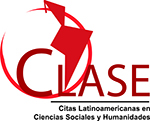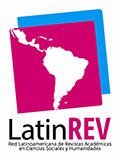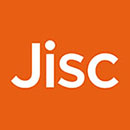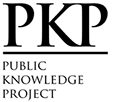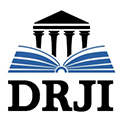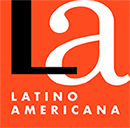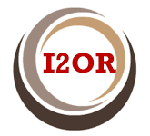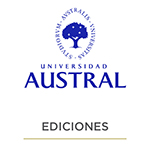Protection Through Invention Patents for Human Stem Cells in Costa Rica
Abstract
This work analyzes in detail the possibility of granting protection through invention patents to human stem cells in Costa Rica. It was determined that, in the case of stem cell applications in Costa Rica, there have been multiple resolutions by the Patent Office, in some it has not been alleged that there is a patentability exception on stem cells, but in others it has been indicated that they are discoveries, that they are second uses, that they are inventions whose commercial exploitation must be prevented to protect public order, morality and the health or lives of people or animals. Also consisting of treatment methods in humans. The application of patentability exceptions contained in the Costa Rican regulations and the possibility of applying these exceptions to stem cells are punctually analyzed. Each of the patentability requirements is analyzed to establish the possibilities and conditions that applications for stem cells should meet, so that they can be considered capable of being protected by patent in Costa Rica. It is concluded that, according to the Costa Rican legal framework, it is possible to obtained patents for stem cells from human beings.
Downloads
References
Ascarelli, T. (1970). Teoría de la concurrencia y de los bienes inmateriales. Barcelona: Bosch.
Dal Paz, M. y Barbosa, D. B. (2008). Incertezas e riscos no patentamiento de biotecnología. En Iacomini, V. (Coord.), Propriedade intelectual e biotecnologia. Curitiba: Jurúa.
Davison, E. M. y Myles, G. M. (2008). How Biotech Patentees can Navigate KSR. Managing Intellectual Property, (181), 79-82.
Dorsey, C. K. (2008). Isn’t it obvious? How the USPTO has changed its evaluation of patent applications in response to the KSR decision. Intellectual Property & Technology Law Journal, 20(5), 12-16.
Evans, M. J. y Kaufman, M. (1981). Establishment in culture of pluripotential cells from mouse embryos. Nature, 292(5819), 154-156.
Fernández de Córdoba, S. (1996). Derecho de patentes e investigación científica. Valencia: Editorial Tirant lo Blanch.
Golden, J. M. (2010). WARF’s stem cell patents and tensions between public and private sector approaches to research. The Journal of Law, Medicine & Ethics, 38(2), 314-331.
Hammersla, A. M. y Rohrbaugh, M. L. (2012). Intellectual property claims to stem cell technologies: research, clinical testing and product sales. En Atala, A. (Ed), Progenitor and Stem Cell Technologies and Therapies (pp. 121-146). Cambridge: Woodhead Publishing.
Huang T. (2010). Stem cell patent landscape and patent strategy. Trends in Bio/Pharmaceutical Industry, (6), 41-46.
Kariyawasam, K., Takakura, S. y Ottomo, N. (2015). Legal implications and patentability of human stem cells: Australia and Japan compared. Journal of Intellectual Property Law & Practice, 10(3), 198-199.
Maherali, N., Sridharan, R., Xie, W., Utikal, J., Eminli, S., Arnold, K., Stadtfeld, M., Yachechko, R., Tchieu, J., Jaenisch, R., Plath, K. y Hochedlinger, K. (2007). Directly reprogrammed fibroblasts show global epigenetic remodeling and widespread tissue contribution. Cell Stem Cell, 1(1), 55-70.
Manual de organización y examen de solicitudes de patentes de invención de las oficinas de propiedad industrial de los países del Istmo Centroaméricano y la República Dominicana. (2015). (Sin datos).
Martin, G. R. (1981). Isolation of a pluripotent cell line from early mouse embryos cultured in medium conditioned by teratocarcinoma stem cells. Proceedings of the National Academy of Sciences, 78(12), 7634-7638.
Minssen, T. y Nordberg, A. (2015). The evolution of the CJEU’s case law on stem cell patents: Context, outcome and implications of Case C-364/13 International Stem Cell Corporation. Nordic Intellectual Property Law Review, (5), 493-503.
Okita, K., Ichisaka, T. y Yamanaka, S. (2007). Generation of germline competent induced pluripotent stem cells. Nature, 448(7151), 313-317.
Piccard, E. y Olín, X. (1969). Traité des brevets d’invention et de la contrafaçon industrielle. París: A. Durand et Pedone Lauriel.
Prifti, V. (2019). The limits of “ordre public” and “morality” for the patentability of human embryonic stem cell inventions. The Journal of World Intellectual Property, 22(1-2), 2-15.
Real Academia Española. (s.f.). Diccionario de la lengua española. https://dle.rae.es/.
Saha, K. y Jaenisch, R. (2009). Technical Challenges in Using Human Induced Pluripotent Stem Cells to Model Disease. Cell Stem Cell, 5(6), 584-595.
Takahashi, K., Tanabe, K., Ohnuki, M., Narita, M., Ichisaka, T., Tomoda, K. y Yamanaka, S. (2007). Induction of Pluripotent Stem Cells from Adult Human Fibroblasts by Defined Factors. Cell, 131(5), 861-872.
Takahashi, K. y Yamanaka, S. (2006). Induction of pluripotent stem cells from mouse embryonic and adult fibroblast cultures by defined factors. Cell, 126(4), 663-676.
Thomson, J. A., Itskovitz-Eldor, J., Shapiro, S. S., Waknitz, M. A., Swiergiel, J. J., Marshall, V. S. y Jones, J. M. (1998). Embryonic stem cell lines derived from human blastocysts. Science, 282(5391), 1145-1147.
Tvedt, M. W. y Forsberg, E. M. (2017). The room for ethical considerations in patent law applied to biotechnology. The Journal of World Intellectual Property, 20(5-6),160-177.
Wernig, M., Meissner, A., Foreman, R., Brambrink, T., Ku, M., Hochedlinger, K., Bernstein, B. E. y Jaenisch, R. (2007). In vitro reprogramming of fibroblasts into a pluripotent ES cell-like state. Nature, 448(7151), 318-324.
Yamanaka, S. (2007). Strategies and new developments in the generation of patient-specific pluripotent stem cells. Cell Stem Cell, 1(1), 39-49.
Zakrzewski, W., Dobrzyński, M., Szymonowicz, M. y Rybak, Z. (2019). Stem cells: past, present, and future. Stem Cell Research & Therapy, 10(1), 68.
Copyright (c) 2020 Freddy Arias Mora

This work is licensed under a Creative Commons Attribution-NonCommercial-NoDerivatives 4.0 International License.
This license allows the copy, distribution, exhibition and representation of the work provided authorship is acknowledged and the work is properly quoted. Commercial use of the original work or the generation of derived works are not allowed.
The authors hereby guarantee the right to the first publication of the work to the Revista Iberoamericana de la Propiedad Intelectual.









